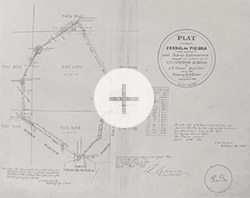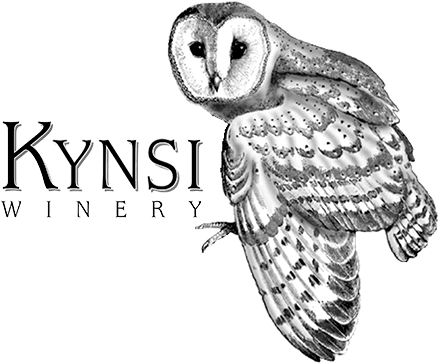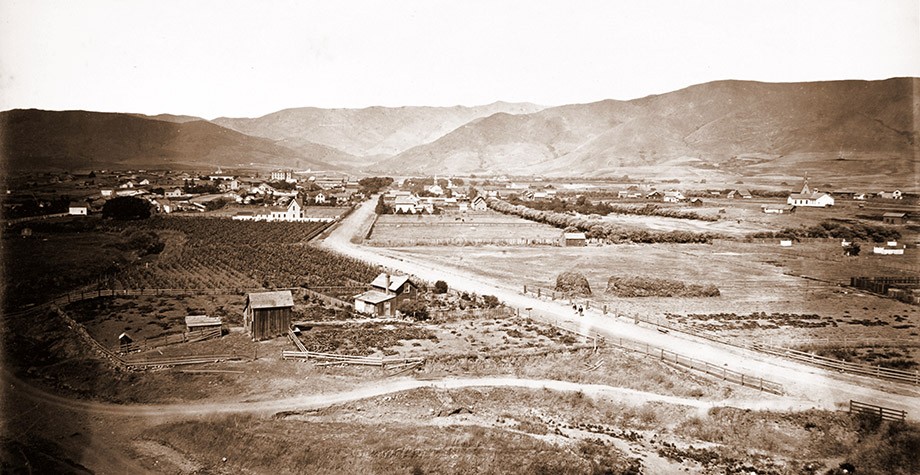Vineyard History
The origin of the name of the Estate Stone Corral Vineyard goes back to San Luis Obispo's mission days in the late 1700's. The temperate climate of the Edna Valley with average rainfall of 24 inches and maritime influence with foggy mornings and warm afternoons produced lush grazing lands for Mission de la Tolosa's vast cattle herds. The mission padres constructed a large, circular corral made of stacked stones for use in handling their cattle and for thrashing grain. The stone corral was located between two creeks in the heart of the Edna Valley. When the mission lands were divided into ranchos during the early 1800's, the land in the Edna Valley became part of the 30,911 acre Ranch Corral de Piedra. The English translation is Stone Corral Ranch.
After California’s annexation to Mexico in 1822, Mexican government officials and retired Army officers pushed for secularization of the missions, with their eyes on the vast mission lands. Franciscan priests were forced to leave San Miguel and San Luis Obispo. The churches fell into ruins, but many outbuildings on the mission ranchos became living quarters for the Mexican haciendas.
During the Rancho Period, nearly 1/2 million acres previously controlled by the two Missions were distributed to Mexican citizens. Hides and tallow from herds established by the mission padres generated large amounts of money, establishing a period of unprecedented prosperity. With the newfound growth, came a period of excess with generous hospitality and fiestas.
The Corral de Piedra, or “Stone Corral,” had been one of the richest rancherias of Mission San Luis Obispo. The large herd of California mustangs, later owned by Capt. William G. Dana at his Rancho Nipomo, were also first bred in the stone corrals of the Edna Valley.
The lifestyle of the Mexican Californios prevailed into the mid 1850’s, but by the time of owner José María Villavicencio’s death in 1853, the lucrative sale of cattle, horse and sheep began to decline in value. The rancho was left to his widow, Rafaela Rodriguez. Over the next few years the ranch fell  into disrepair after drought and flash floods brought on typhus followed by cholera, killing many of the Native American vaqueros. At the same time, the United States Land Act of 1851 had gone into effect, which was intended to bankrupt the California rancheros. Most of the Californians knew little about a cash economy because barter was customary at that time. Confronted with high county taxes, the financial troubles deepened for Rafaela. She finally borrowed a large sum from her brother, Jacinto Rodriguez. When the great drought of 1863-1865 hit, the vast herds of Mission era cattle and sheep died off. Jacinto persuaded Rafaela’s sons to sell their share of Corral de Piedra to him.
into disrepair after drought and flash floods brought on typhus followed by cholera, killing many of the Native American vaqueros. At the same time, the United States Land Act of 1851 had gone into effect, which was intended to bankrupt the California rancheros. Most of the Californians knew little about a cash economy because barter was customary at that time. Confronted with high county taxes, the financial troubles deepened for Rafaela. She finally borrowed a large sum from her brother, Jacinto Rodriguez. When the great drought of 1863-1865 hit, the vast herds of Mission era cattle and sheep died off. Jacinto persuaded Rafaela’s sons to sell their share of Corral de Piedra to him.
Jacinto sold the ranch to the Steele family whom knew the rains would return to drought stricken Corral de Piedra. They purchased it in 1866 and made San Luis Obispo the dairy center of Western America. Families such as the Picos and the Estradas sold much of the nearby ranchos to Anglo newcomers, including the Steele brothers, George Hearst, and Patrick Murphy. These new landowners transformed the hide-and-tallow industry into beef-and-dairy-cattle production.
The winery resides in a renovated, old dairy. It had ceased operations for decades prior, but you can still appreciate the history and distinctive story, told by the land, the architecture and also the wine.


